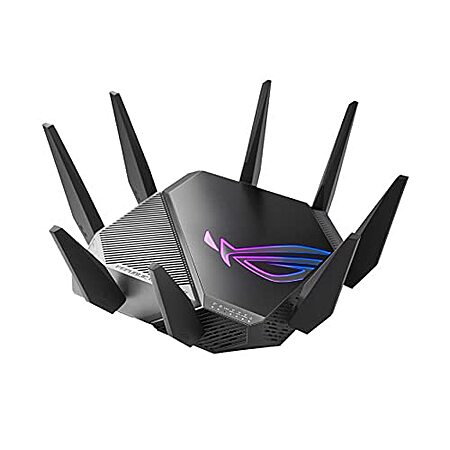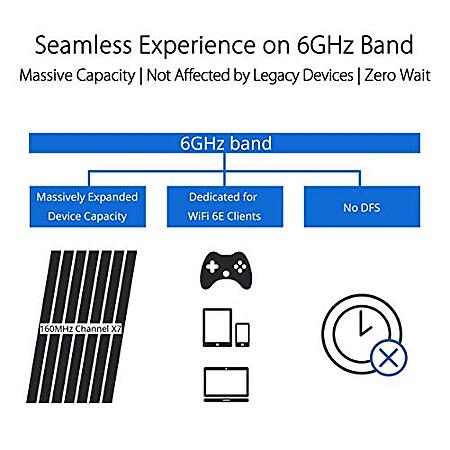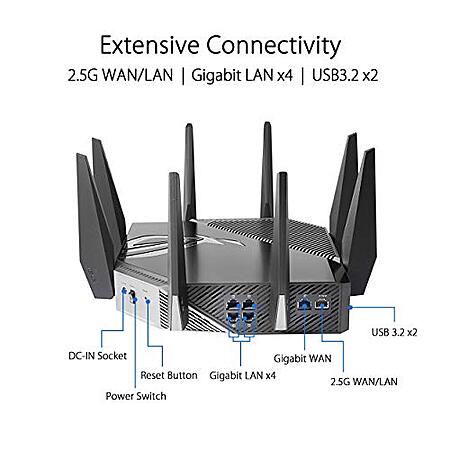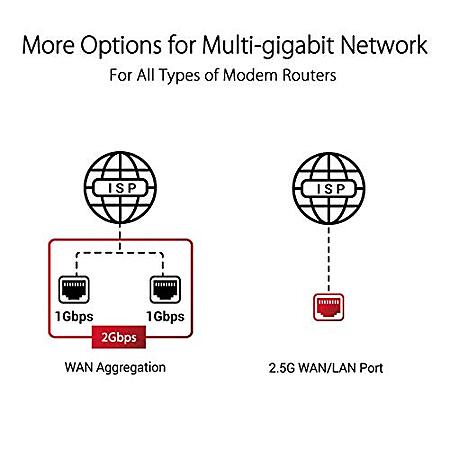expiredphoinix | Staff posted Jan 23, 2023 04:40 PM
Item 1 of 6
Item 1 of 6
expiredphoinix | Staff posted Jan 23, 2023 04:40 PM
ASUS ROG Rapture WiFi 6E Gaming Router (GT-AXE11000) - $349.99 + F/S - Amazon
$350
$480
27% offAmazon
Visit AmazonGood Deal
Bad Deal
Save
Share












Leave a Comment
11 Comments
Sign up for a Slickdeals account to remove this ad.
What am I missing?
Our community has rated this post as helpful. If you agree, why not thank Jsz0301
6ghz for wireless backhaul is completely valid since you will have 4x4 stream MIMO communicating without interference, so if you plan on buying two, it's quite beneficial for large home coverage.. power output and frequency are less of a concern when running 4x4 >4x4 MIMO across two routers with high output.
I would personally just grab something like an AX86S at bestbuy for $153 with trade in unless you want platform longevity in which case the GT-AX6000 will be great, since newer..
They don't share exact hardware. GT-AX6000 has "wave 2" BCM AX hardware. CPU is upgraded/die shrunk and radios are newer revisions.
My experience with GT-AX6000 was lackluster.. lower range due to my environment (testing all channels etc)., but many people say their range improved with the newer gen hardware. YMMV
AXE16000 is the one that shares hardware with GT-AX6000.
6Ghz routers do not have removable antennas per regulation.
I would say $300 is a fair price for this specific model, $350 is pushing it, unless you plan on buying two for WL backhaul purposes.
it's effectively a dual band router for most people.
Sign up for a Slickdeals account to remove this ad.
I am not the best with network stuff, so hopefully that question makes some sense...
I am not the best with network stuff, so hopefully that question makes some sense...
It's exactly how higher end mesh systems with dedicated wireless backhauls function. The low end ones just "hop" and end up with lower possible speeds, similar to standard AI mesh on ASUS routers. The new google 6E system is exactly like this.. low end hops.
Since not many consumers really use 6ghz spectrum, you don't have to worry about local interference as much, which will translate to a very stable connection using the 5ghz/2.4ghz radio for connections on each side.
It's not that the 6ghz spectrum requires newer hardware either, but rather the hardware has to be revised, certified, and tested to broadcast into higher spectrum.
Since 6ghz requires fixed antennas, the only thing that can be modified in real time is pre existing mesh systems with internal antenna. The older ASUS XT8 for example was updated to support newer 5Ghz UNII-4 spectrum for backhaul purposes. (Similar effect of having 6ghz, but with what seems to be higher power limits)
WIFI itself is funny. There is no static answer to what's better.. I have an older AC router that out performs a few AX routers with similar 4x4 configs on 5G. Going to be subjective to channels/local environment.
The client end of 6ghz is going to prob remain "useless", especially due to how WIFI7 hardware will function on client end. (Multistream across multiple bands similar to intel DCT technology).
I am not the best with network stuff, so hopefully that question makes some sense...
Leave a Comment